Backpacking, what a great experience. Especially if you want to learn more about a country's gastronomy!
I went on my first backpacking trip when I was ten. We were on vacation in Switzerland. My dad was always quite an outdoorsman, and I had come along on fishing trips many times already, waking before down to drive out to the lake and catch the fish feeding on morning stillness under a soft blanket of mist, but this was to be something altogether different. You see, on those trips, although the morning lake sometimes provided moments of the illusion of solitude, the noise from the road, shattered it every few minutes. And later in the day, the motor boats destroyed it completely.
My First Night As An "Outdoorsboy"
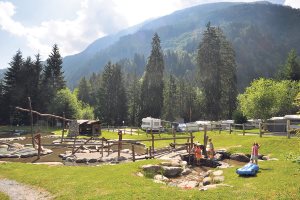
How can I describe that first night, camping on a rise above that giant, mist-covered lake of Thun? The loons called and called, lonely and longing, beginning below us and trailing off among the interlocking lakes branching into eternity. Night creatures scurried around about us, going from stillness to frantic motion to stillness again, as all night, the wind fell and rose and fell, and the moon ceaselessly rippled on the water's bright skin. I can remember all of it – every sound, and wished to stay awake for the duration of the night, yet somehow, sleep overtook me quickly in the exhaustion of a full day's hike, and I awoke fully refreshed.
What A Multitude Of Aromas, When Cooking Outdoors
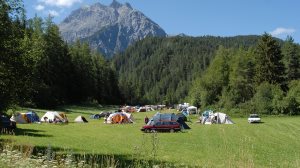
Our backpacking trip was over far too quickly. Nine days and it was over – such a paltry duration when confronted with the infinite expanse of nature. I remember on the last day, my dad showed me on a map where we had been – that little speck, the lake we first camped beside, that tiny snake, the ridge that had seemed to mighty as we climbed it, the ridge that skinned my knees twice and left my legs throbbing.
It was tiny, a little patch of knowledge drowning in a massive sea of green. I didn't know whether to despair or laugh, seeing how much there was to explore – so much that in a dozen life times, I would never see it all. Finally I chose laughter, and though I still have seen but a speck of the whole spectacular natural world, and will never see it all, I have returned many times to try, even travelling nearly 3 years around the world.
There is one thing about Switzerland that I will always remember... their exquisite gastronomy!
Swiss Gastronomy And Wines Tour
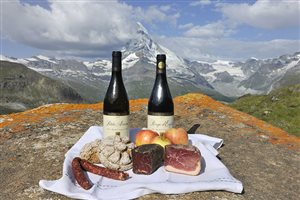
This particular tour, that can be done by train, by car, or by bus tour, will start in Biel/Bienne (b.t.w. City of Watch Making "par excellence") in Northwest Switzerland; head south along the Watch Valley and Lake Geneva Region. Then you’ll head south to Geneva before heading east toward Ticino. From Ticino, you’ll travel north through Graubuenden and then to Liechtenstein. From there you’ll travel north to Schaffhausen.
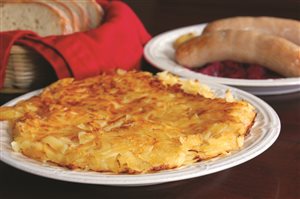
Along the southern border of Switzerland, close to 9% of the population speak Italian. There you will enjoy typical northern Italian flare and sample Italian wines. Along the north east border of Switzerland, where Switzerland ends and Germany begins, you’ll be able to "enjoy" German tradition and more good wine. Almost 65% of the Swiss population speak some kind of German dialect. You will sample exceptional French cuisine and wines along your tour. A traditional dish in Genava is the Filets de perche, the Longeole; raw sausage that is not completely matured, wild fennel, garlic, nutmeg and white wine flavoured pork. You might also enjoy Cardons; a stalky vegetable that tastes a bit like artichoke. Chasselas and Gamay wines are the varieties that are most comment in the region.
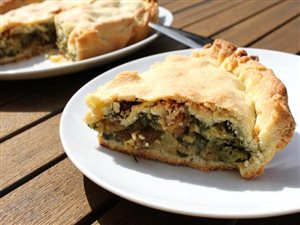
Not to be missed; the German cuisine and wines along your tour, the regional classics; Pizokel (a form of Spatzli – like pasta) and the Beinwurst (a pork ragout). Among the choices of wines can be found; Blauburgunder (a Pinot noir), one of many Chardonnays, and Riesling (not to be missed). At the time that I last did this tour (many years ago), you could order or download a 72 page book published by the Swiss Tourism bureau which includes more information about this particular tour. It provides you with detailed information on restaurants, wine tasting events, and local products that might be of interest. It also gives you detailed information on a number of hotel choices.
Swiss Chocolate - A Melting Temptation

Personally, I really love our chocolate but I can also understand that other countries also love the chocolate that they produce.
During any hike or walk, we always take a slab of chocolate with us. It’s an important element in the basic hiking kit. After a long physical effort or an unforeseen rainstorm, there’s nothing better than a slab of Swiss chocolate to put everyone back in a good mood.
During the obligatory Swiss military training, each soldier is given chocolate.
It is quite strange, given the fact that Switzerland is a country with magnificent mountains and beautiful deep blue lakes, that there is not any sort of tropical fruit growing in our country.
According to the writings found, chocolate is mentioned for the first time around the year 600 After Christ, when the Mayas immigrated to the Northern part of South America and started cultivating cocoa plants.
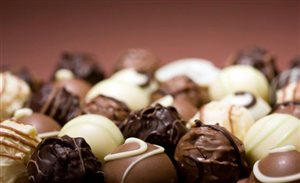
This was known as chocolate for desserts. Maybe, when you were a child, you too "stole" a piece of chocolate while your mother was preparing a dessert and found yourself most disappointed when tasting it, finding it quite bitter. This is where the pioneers of chocolate production enter the picture.
Among these pioneers, I will mention a few that helped Swiss chocolate to be recognised worldwide.
François-Louis Cailler
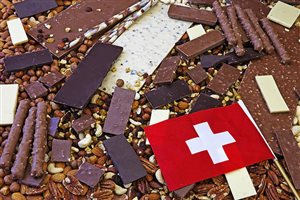
Daniel Peter
Mr. Peter is known as the inventor of Swiss milk chocolate. It took him more than 8 years to develop his product and to be able to assume the production of milk chocolate in the form of slabs, fit to be sold for public consumption. In the beginning, he produced the slabs with a base of sweetened condensed milk and this is how his commercial relationship with Mr. Henri Nestlé, started.
Henri Nestlé
Henri Nestlé began in this then, small industry in the beginning, by providing sweetened condensed milk to Daniel Peter who at the time produced milk chocolate with cocoa and condensed milk. In 1879 it was impossible to envisage that their collaboration was going to encounter such success and result in the worldwide known company, Nestlé.

Should you find yourself in the Montreux region, next to the Lake Leman, you will have the possibility of taking a train named "Swiss Chocolate Train". The train departs from Montreux to climb up to the region of Gruyère.
Gruyère is known for their famous cheese, "Gruyère". The train then follows its trail to arrive at Broc, where you will find a chocolate factory. I would recommend that you choose the 1st class wagons. They date back to 1915 and are from the "Belle époque". You will definitely enjoy crossing through the vines without forgetting the medieval city of Gruyères.
The Swiss Chocolate Train is usually functional from April through to October and the trip lasts round about 1/2 hour. You will experience a visit to the Broc chocolate factory and you are most welcome to taste the chocolate while there.
Rudolph Lindt
Rudolph Lindt from Bern, discovered in 1879, that chocolate can be rendered even smoother and "melt in the mouth" by adding cocoa butter to it. This is what gives Lindt chocolate its smooth and melting texture.
Jean Tobler
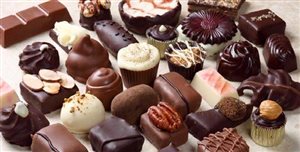
Just a little story: during my years of backpacking across the world, I remember seeing this particular chocolate in Southern Asia, Australia, New Zealand, South- and Central America. At that particular time, I was contented with window-shopping because my travelling budget, would not allow for. Back in Switzerland, after 3 years of travelling, I largely caught up.
I wish you a lot of pleasure while coming on hikes or walks in Switzerland and should you be obsessed by the temptation of Swiss chocolate, go ahead and enjoy.
Switzerland Recipes to Make Your Mouth Water
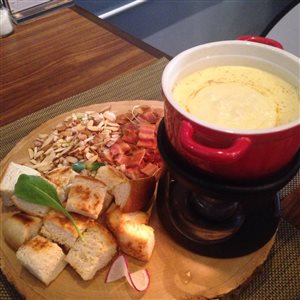
I know many foreigners, living in Switzerland, and this for quite a few years now and a large majority, there are always exceptions; really enjoy eating our cheese fondue. There are even times when they are fonder of it than the average Swiss!
When I go abroad and the opportunity is present, I go and see my friends from that particular country; I call or e-mail them before leaving and they always remind me not to forget "that packet of fondue" and that I have to bring it with me.
Generally, fondues are eaten during the winter months and almost every restaurant has its own secret recipe. However you will find that certain tourist summer stations still have the fondue on their menus in summertime.
These recipes date back to the 18th century. The word "fondue" comes from the French word "fondre" meaning "to melt".
In the canton of Neuchâtel, their fondue is prepared with at least two types of cheeses (Gruyère and Emmental) mixed with a little very dry white wine. This is a very convivial meal because each person participates in dipping his bread, on the tip of a very long fork, into the fondue pot, situated in the middle of the table. The pot is adapted to this particular meal and commonly known as a "caquelon". Out of all the recipes that exist, allow me to share my own with you:
Swiss Recipe for Cheese Fondue
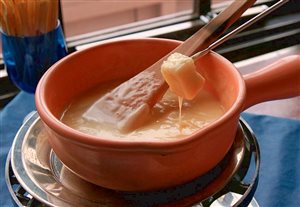
- 1 Garlic clove
- 28 Ounces of cheese
- Dry white wine
- Pepper, freshly ground
- Flour
- Baking soda
- Kirsch (cherry schnapps)
- Fresh bread
Instructions:
- Make a binding agent. Mix 4 to 5 teaspoons of flour with 1 teaspoon of cherry schnapps (you can add more according to the number of people eating the fondue). To this, add a pinch of baking soda.
- Take the garlic and rub it against the fondue pot. If you like garlic, leave it in the fondue pot.
- Add 4 cups of dry white wine and warm at a low temperature.
- Once the wine boils, add both cheeses at the same time.
- After the cheese mixture begins to boil, cook this for a few minutes.
- Add the binding agent.
- Season with the pepper and serve as soon as possible. Keep the cheese warm at a low temperature while serving.
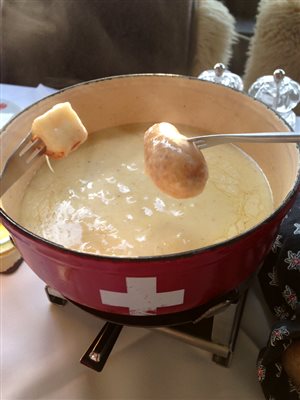
In the Geneva region, they usually use 3 types of cheese and add mushrooms to the mixture.
In the canton of Glaris, the fondue generally has a very pronounced taste because very often, they add a little bit of an herb cheese named "Schabziger".
We always eat our fondue with fresh white bread with a thick and crispy crust and this for the simple reason that it doesn’t slip off the fork. Should you not be able to find fondue forks, you can also use the little sticks that are sometimes used for mixed grills. One important thing to know about fondues is that should you happen to lose your bread in the fondue mix, the fondue tradition has it that you offer a bottle of white wine to all the people participating in the meal!
Other thing, don’t only limit yourself to the ingredient cheese in your fondue. There are also chocolate fondues that are presented for deserts. These fondues are made by melting chocolate in the "caquelon" and you can dip fresh or dry fruit or even marshmallows in it.
Evidently, there is also a large range of local dishes, typically Swiss. Swiss gastromy has an excellent reputation worldwide. The different dishes are also, in part, influenced by the countries surrounding Switzerland.
I wish you many an excellent table experience during your stay in Switzerland and always a wonderful time during your walks and hikes across this beautiful country.
Navigation
[jbio template="bootbomb0"]

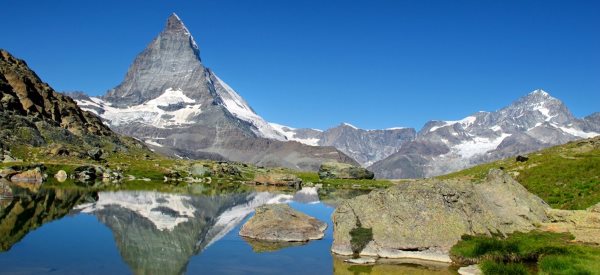
0 comments